As winter approaches, it’s time to protect perennials, roses and other small bushes from the impending cold weather.
Snow, ice, and fluctuating freezing and thawing temperatures can take a toll on plants.
Without proper protection, many can become heavily damaged, or freeze out all-together.

But with a little care now, hydrangea, rose bushes, lilies, hosta plants and other perennials can remain vibrant and strong through the most sever of winters.
Here are the ins-and-outs of preparing perennials for winter, along with a few tips and tricks for larger perennials such as rose bushes, hydrangea and perennial grasses.
How To Protect Perennials – To Cut Or Not Cut Back
“Do I need to cut the perennials in my flowerbeds back?”
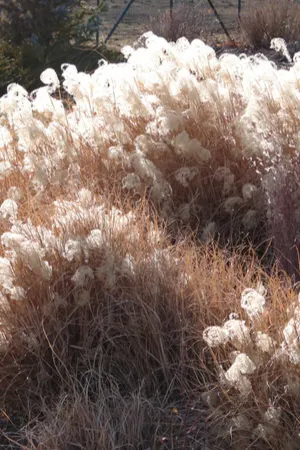
That is the million dollar question for many gardeners.
Nearly all small foliage perennials can be left in-tact through the cold winter months.
In fact, leaving foliage and branches in places is a form of natural protection. It helps insulate the plants roots from the ever-changing temperatures winter can bring.
Leaving plants in-tact also allows for seed heads to form and create new plants while feeding birds and other wildlife.
But many times, there is a need to prune back.
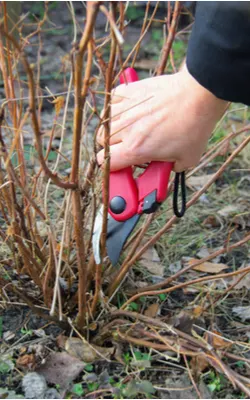
For many gardeners, the thought of looking out all winter and seeing a tangled decaying mess of foliage is too much to handle. And in some cases, leaving those seed heads created too many new volunteers.
How To Protect Perennials – When you do cut back…
If you do choose to cut back the stems and foliage of perennials like hosta plants, daisies, lilies, bee-balm and more, the real key is to provide a bit of freeze and thaw protection at their base.
This can be done easily with fall’s greatest bounty – leaves! Leaves and shredded leaves make an excellent mulch for perennials.
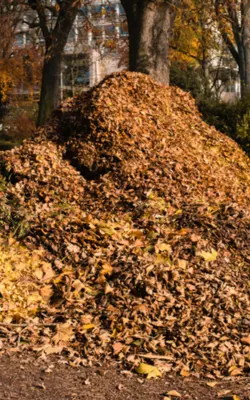
They keep the roots and crowns of plants insulated from the extreme swing of temperatures winter can bring.
There are a few exceptions for some perennials that need a little extra care. Here are a few of the most common perennials that require special attention:
Ornamental Grasses
Ornamental grasses can be pruned back in late fall, during the cold of winter – or even in the early spring.
It really comes down to a matter of personal preference. There are, however, a couple of compelling reasons to keep them up until spring.
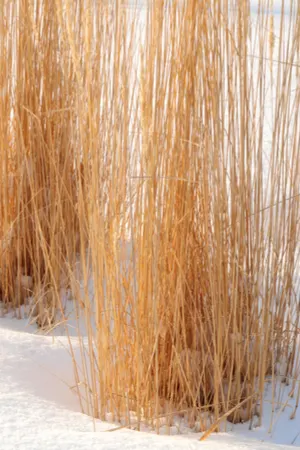
Ornamental grass clumps provide protection for many birds and animals through the cold winter months. Not to mention, they make great nesting material come springtime for the birds.
The thick grasses also can provide a bit of thermal protection for other perennials that may share the bed space. And they also make for an excellent snow and wind block.
As for dividing them, this is a chore that definitely needs to wait until spring. For more see : Pruning Back Ornamental Grasses.
Rose Bushes
Large shrub bushes are usually strong and tolerant enough to make it through the winter without too much trouble.
One thing you can do to help is to stop all fertilizing in late summer to allow rose shrubs to ease into their normal dormancy period. This goes for both large rose bushes, and for more tender roses.
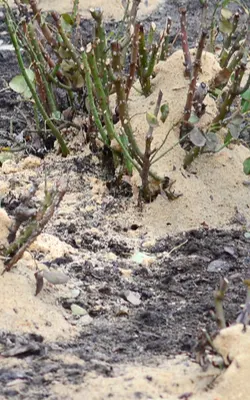
For tea roses and other tender varieties, a bit more protection is required.
Stop pruning and dead-heading in early fall.This allows the bush to stop producing new shoots, and go dormant faster.
Apply 6 to 12 inches of shredded leaves, sawdust or straw to cover the crown and base. If need be, you can use a temporary cage or fence to keep the mulch mounded.
Do not prune or cut back roses until early spring.
Hydrangea
Hydrangeas do not have to be cut back, but doing so can encourage larger blooms.
Hydrangeas grow and set blooms on the same year’s growth. So if left to grow on older branches, the plant will be sturdier, but the blooms smaller.

This happens because some of the energy is spent on maintaining a larger plant.
If you choose to cut back, cut back after the foliage has died back in the fall. Leave about 4 to 6 inches of old wood at the bottom.
This will serve as a nice base to keep blooms and new growth from easily toppling over.
Apply enough mulch to cover the crown and old wood growth through winter.
This Is My Garden is a garden website created by gardeners – for gardeners!
We publish two articles every week, 52 weeks a year. Sign up below to receive them free each week via email, and be sure to follow us on Facebook This article may contain affiliate links
